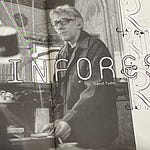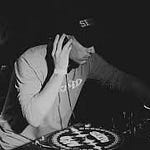Weirdcore is a London-based visual artist and designer renowned for creating surreal, glitch-heavy, and psychedelic visuals that push the boundaries of audiovisual art. Specializing in experimental and immersive content, Weirdcore is best known for collaborations with electronic music artists, most notably Aphex Twin, as well as M.I.A., The Horrors, Tame Impala, and Gwen Stefani. His work blends 3D animation, glitch art, real-time video manipulation, and digital distortion with organic forms, creating dreamlike and chaotic visuals that evoke nostalgia, confusion, and unease, aligning closely with the internet-born "weirdcore" aesthetic.
Artistic Style: Inspired by 1960s psychedelia, Op Art, and M.C. Escher, Weirdcore’s visuals are characterized by bold, abstract imagery designed for aesthetic impact rather than narrative storytelling. His work often incorporates low-quality, early internet-style graphics (late 1990s to mid-2000s), distorted textures, and elements like liminal spaces, cryptic text, and surreal juxtapositions, resonating with the weirdcore aesthetic’s themes of nostalgia, dread, and disorientation. He uses tools like Deep Dream Generator and photogrammetry to manipulate digital environments, creating an alien yet familiar feel.
Notable Collaborations:
Aphex Twin: Weirdcore has been a key collaborator since 2009, creating visuals for live performances, music videos (e.g., T69 Collapse), and album artwork. His work with Aphex Twin involves sound-reactive visuals that adapt to the music’s chaotic frequencies, often using facial mapping to project crowd members’ faces onto screens or morphing them with celebrity images for a surreal effect.
Techniques and Tools:
Weirdcore employs non-traditional methods, including Deep Dream Generator for psychedelic effects and photogrammetry to create digital versions of real-world locations. His visuals often react to music’s waveform (bass, mids, highs), requiring constant adjustments due to the dynamic nature of the tracks he works with. He also uses software like Blender and Adobe After Effects to craft environments, as seen in his contributions to the Backrooms-inspired aesthetic.
Weirdcore Aesthetic Connection:
While Weirdcore (the artist) predates the internet’s “weirdcore” aesthetic, his work heavily influences and aligns with it. The weirdcore aesthetic, popularized in the 2010s, uses low-fi, amateurish imagery, liminal spaces, and cryptic elements to evoke nostalgia and unease, mirroring Weirdcore’s signature style. His visuals, like those in Aphex Twin’s T69 Collapse, feature early internet-inspired graphics, glitched environments, and out-of-context elements, making him a pivotal figure in shaping this aesthetic.
While his collaborators often produce disruptive music, Weirdcore’s art focuses on aesthetic impact rather than political messaging, tapping into subconscious memories and emotions.
















Share this post